Grans
-


-
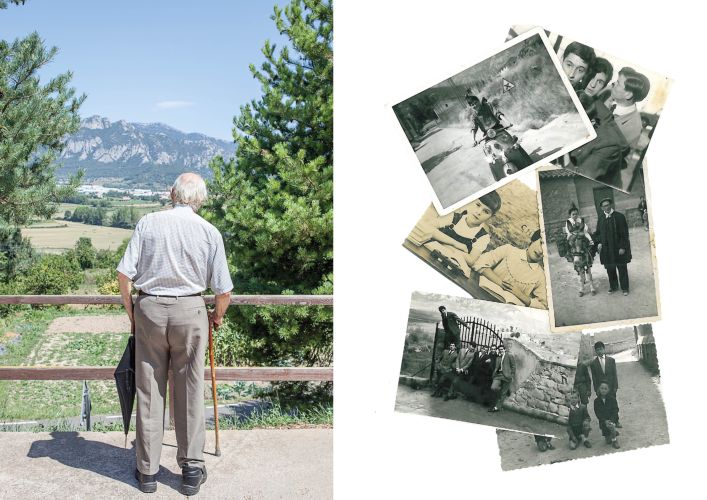

These Family Albums, Of Analogue Photographs, Recover Meaningful Everyday Images In Which Everyone Can Be Recognized: School, Communion And Marriage Parties, Football, Traditional Festivals And Some Spaces That Have Been Transformed Over The Years. Spaces And Events That Also With The Pandemic Were “Hung In Time.”
-
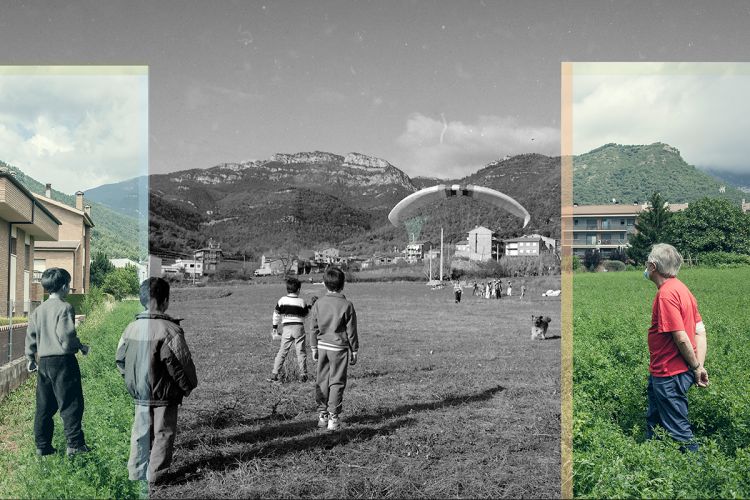

When I Went With Jepet Burniol To Reconstruct The Photo In The Wheat Field, The Neighbors Who Owned The Lot Scolded Us. We Laughed, And Jepet Began To Remember. When He Noticed The New Construction In The Area, He Remembered The Words Of His Father, Who Had Told Him That It Would Never Be Built. But Jepet Came To See It With His Own Eyes. The Landscape Of Deep Catalonia Is Not Immutable. Here The Green Color To The Rural, With Japet Watching A Paraglider Fly In An Open Field.
-
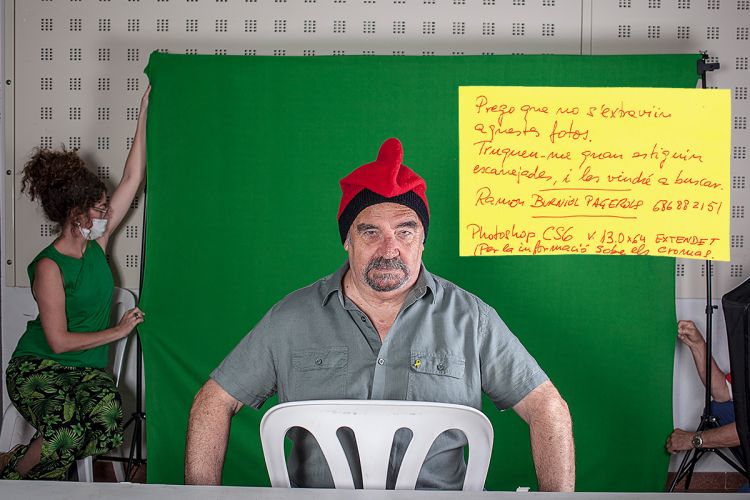

With Ramón Burniol, I First Tried A Chroma And I Realized That In This Project Inclusion Is Interesting But It Is Even More So The Emotional Charge That This Process Has For The Participants Based On The Exercise Of Memory And The Reflection Of A Past Social Environment. “.
-
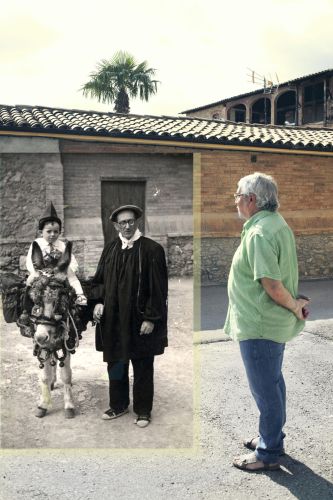

-
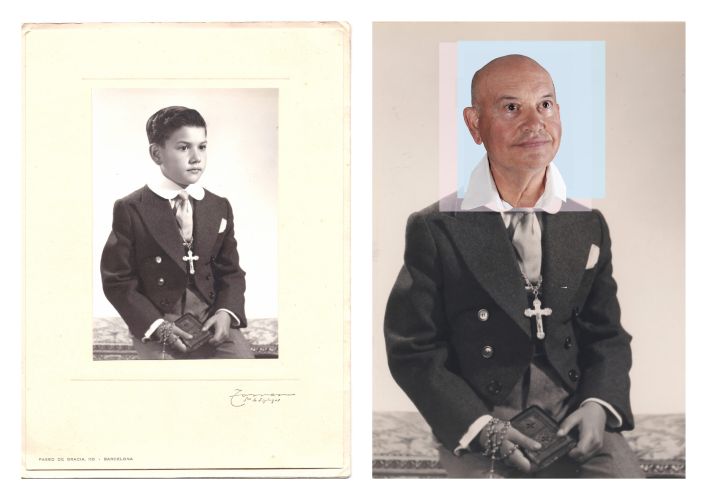

Juan Lluís Sees In This Photo His Own Faith In His Way Of Protecting Himself From The Pandemic From Prayer And The Most Sacred. On The Other Hand, He Tells Me About The Difficulty In These Moments In Finding A Valid Explanation That If God Existed, How Is It Possible To Allow So Much Misfortune. “I Think That For God, Life Is Not Important, Maybe It Is What There Is Afterwards And So On. I Believe It. It’s Something So Big, It Doesn’t Fit In My Head. “
-
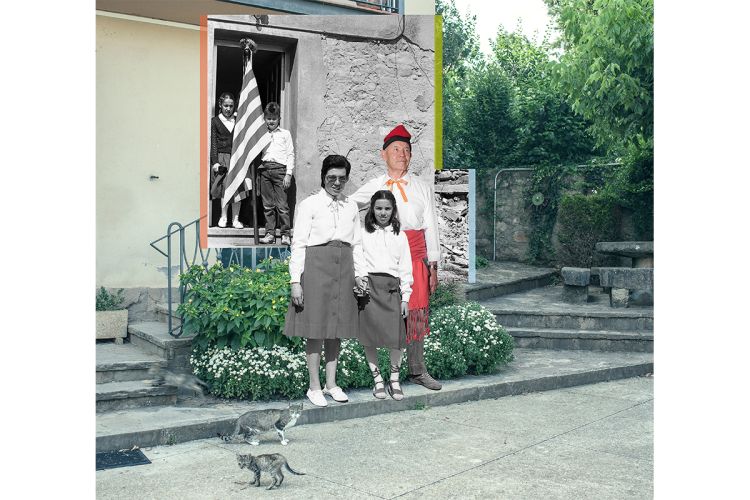

The Canuda Family During The Traditional Festival Of Las Caramelles, In 1968. This Festival Is Celebrated Annually. They Are Typical Popular Songs From Old Catalonia And From The North Of New Catalonia, Which Are Sung At Easter. This Year Was The First Since The Interruption Due To The Civil War Of 1936-1939 That This Hundred Tradition Could Not Be Celebrated. It Is A Work That Has Emotional Implications And, Beyond The Technical Issues, The Simple Reproduction Of The Photos, It Allowed Us To Live That Space-Time Journey From The Playful And The (Are) Laughter And Defy The Restrictions Imposed By The Pandemic.
-
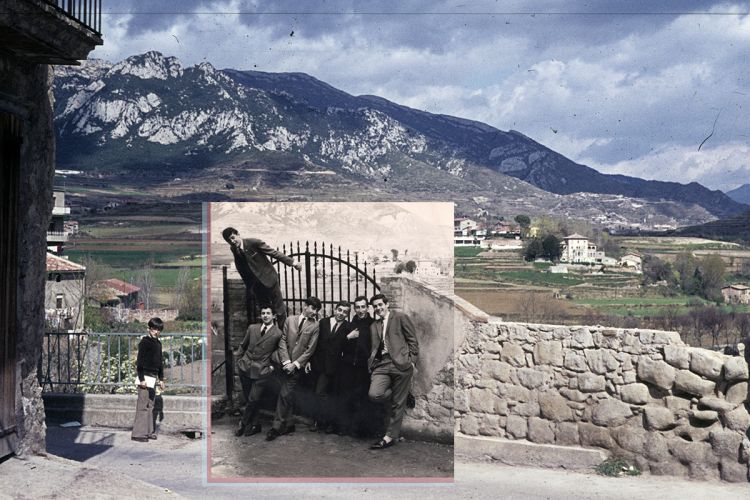

The Most Interesting Thing About The Project Is The Inclusion Of New Photos Alongside Old Photos. The Emotional Burden That This Process Has For The Participants Is Born From The Exercise Of Memory And The Reflection Of A Past Social Environment From Our Perspective In An Exceptional Historical Moment.
-
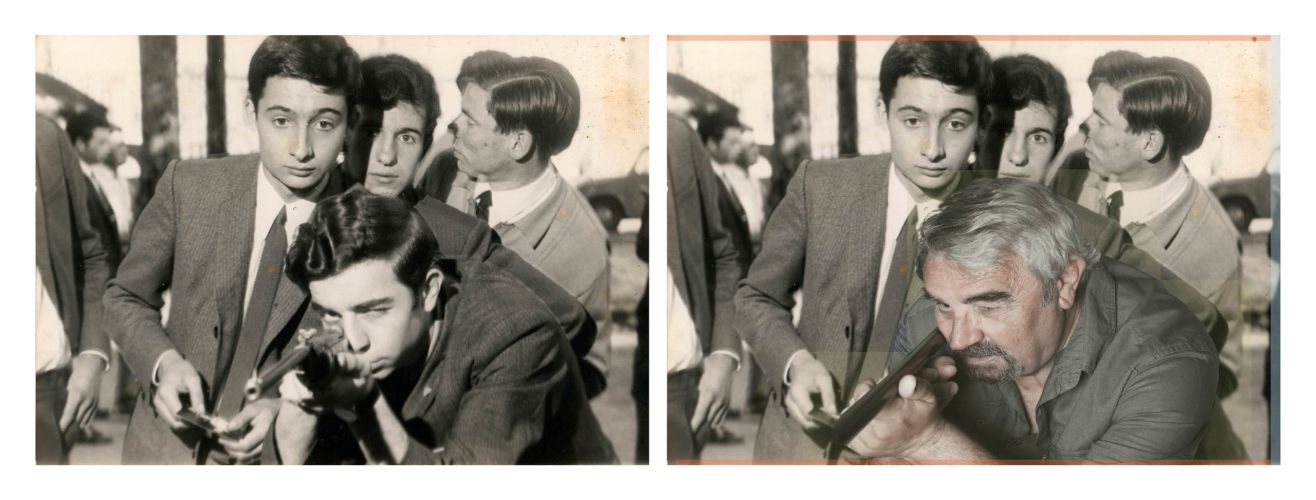

Old Photograph Of Ramón Burniol, Taken At The Shooting Stand Of The Avià Fair. Ramón Told Us That When The Image Was Taken, The Sound Of His Gun Firing Was Synchronized With The Light From The Flash Of The Camera That Photographed Him. So, During The Reconstruction Of The Moment, Ramón Experienced A Real Flashback. Ramón Sees In This Reconstruction Of The Photo A Personal Will, His Determination To Defeat The Pandemic And Return To His Routine
-
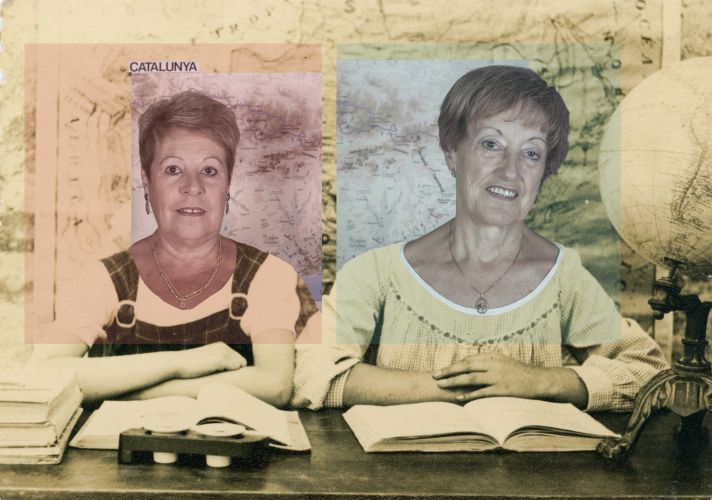

Maria Teresa Calderer And Ludi Argüelles Sharing A School Desk In 1958. Maria Teresa Calderer, 74, Was The Town’s Portfolio For 30 Years. She Confessed To Me That She Does Not Like To Be Taken Pictures, But That When She Saw The Final Result Of The Montage Hanging On Canvas In Her Town, She Was Very Moved. It Is Worth Remembering The Closure Of Schools Since March 2020. I Wanted To Return To This Space But The Permission Was Denied. I Resorted To The Chroma And Tried To Emphasize This Independence Fervor Typical Of This Area And To Which Both Maria Teresa And Ludi Feel Identified.
-


Old Town Dance Hall
-
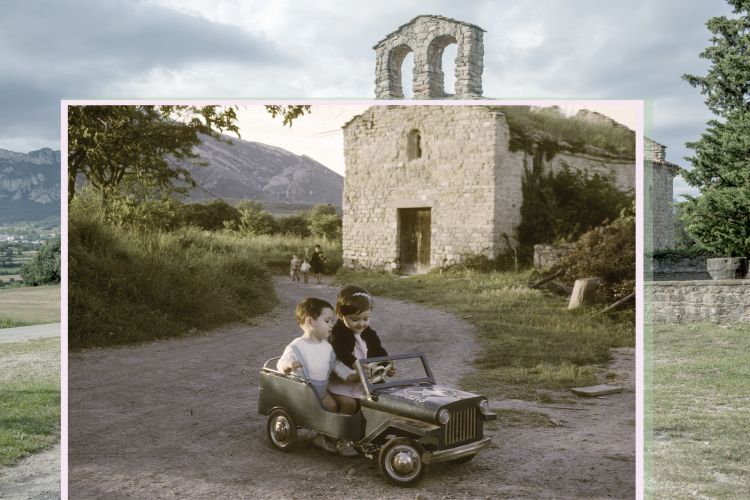

Reconstructed Photograph Of The Photographer Joan Gabarró In Addition To A Tribute To Life, The Exhibition Is Also A Recognition Of The A Consecrated Portraitist Of The Town From Which Many Original Photographs Are Used.
-


-


She Is Cacahuata, And In Her Time She Was Well Known In The Town. She Had A Lot Of Energy And Was In Everything. All The Avians Knew Their House, Which They Called “The House Of Cacahuata”. Cal Used To Clean The Aviá Soccer Team Jerseys, A Very Important Job Since The Team Was The Pride Of The Town. As Of Today, Only Sports Practiced Individually Are Authorized. Both Adults And Children Are Harmed In Their Leisure And Sometimes In Their Escapes, Or Simply In Things That Allow Them To Feel Fulfilled
-
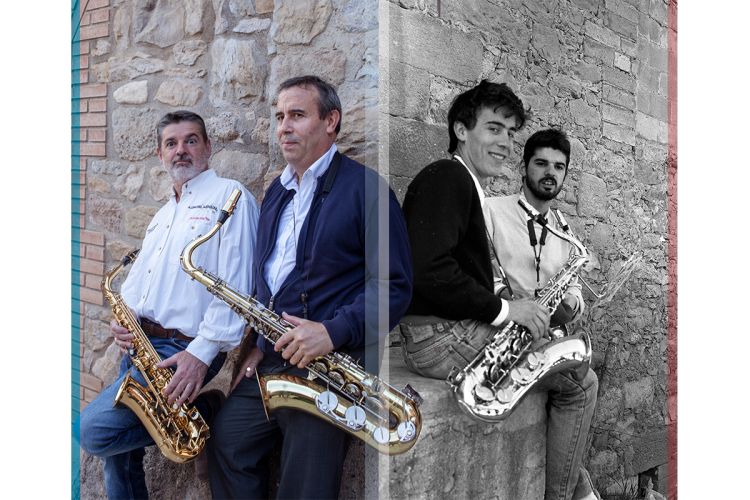

-
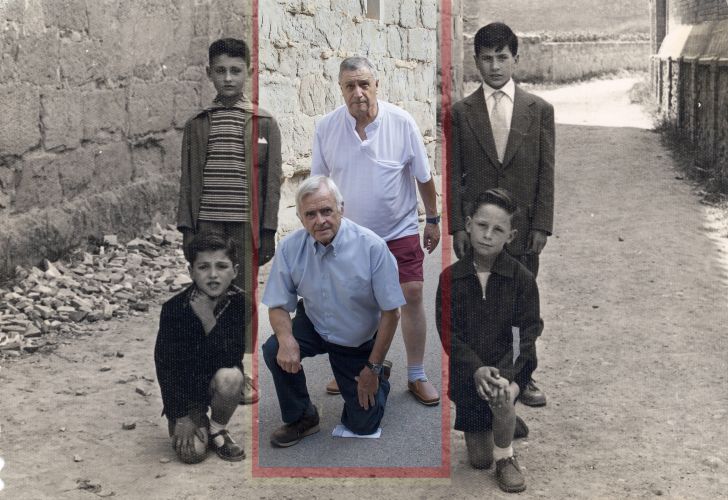

Six Altar Boys In The 50s, Of Which Jesús Burniol Pagerols And Josep Bascompte Tarrés Appear With Current Appearance. The Color Symbolizes The Postwar Environment And Franco’s Criticism. That Childhood Stolen By The Dictatorship. For This Photo, We Cannot Recreate It With All The Components. Despite Respecting The Limitations Due To The Pandemic Situation With A Social Gathering Of A Maximum Of 6 People, The Other “Altar Boys” Did Not Want To Expose Themselves To Any Risk Of Contagion. Undoubtedly, People’s Memories Shape The Identity Of A People And, By Recovering Them Today, They Take On New Meanings And Are Revalued.
-
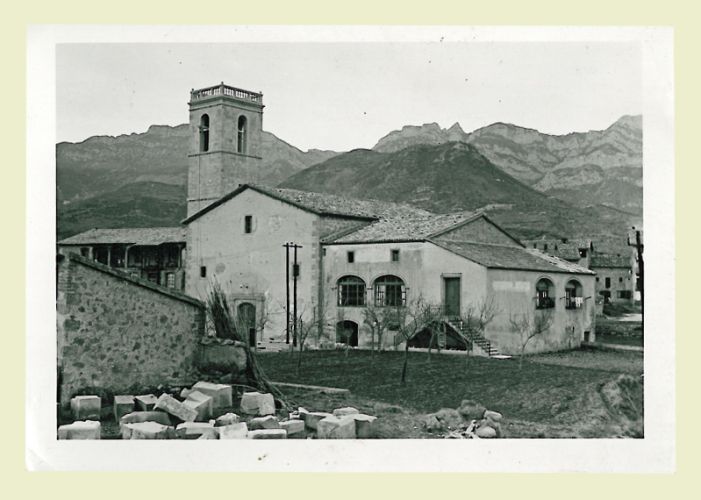
 Old Photograph Of The Village Church
Old Photograph Of The Village Church -
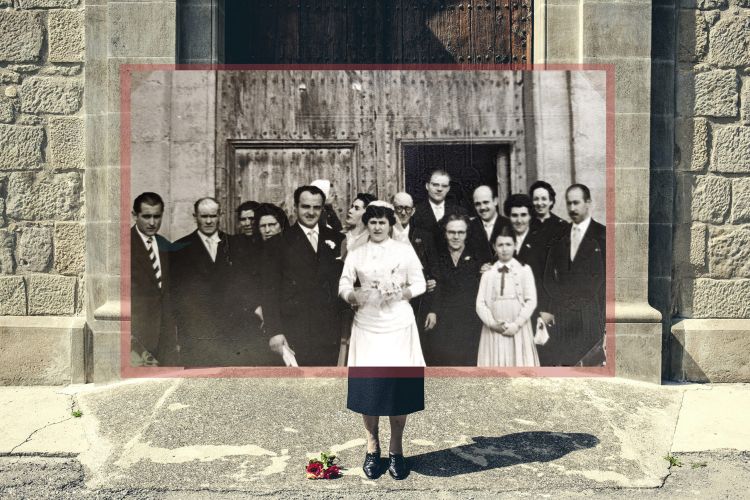

Caterina Pujol On The Day Of Her Wedding In Front Of The Church Of Avià, 1958. The Frame That Represents Caterina Pujol In Front Of The Church Where She Married 62 Years Ago Is Of A Red That Evokes The Passion Of The First Love, As Well As The Loss Of Her Husband Who Died A Year Ago. During The Confinement, Caterina Suffered From A Lot Of Loneliness. He Had 61 Years Of Married Life. The Photo Created Is A Tribute To His Life Partner. When I Showed Her The Final Photo, Catalina Got Angry Laughing. The Day We Took The Recreated Photo She Had Gone To The Hairdresser To Do Her Hair. I Only Photographed His “Legs And Varicose Veins”. She Then Remembered That She Was Missing Those Other Two Legs, Her Partner’s, And That He Had Been “Lame” For A Year. Caterina Will Return To The Hairdresser At The Beginning Of August For An Interview She Will Do With TV3. We Are In Peace. A Precious Moment To See The Illusion Of Going Out On The Streets And Expressing Yourself Again, To Remember Past Times In This Delicate Context.
-
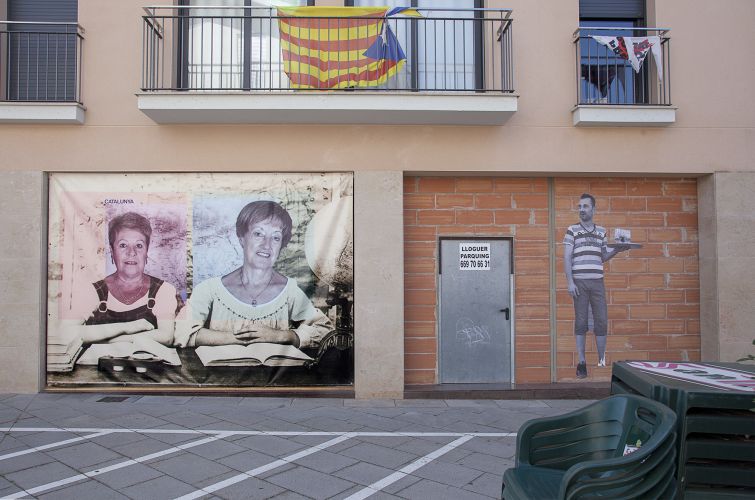

-
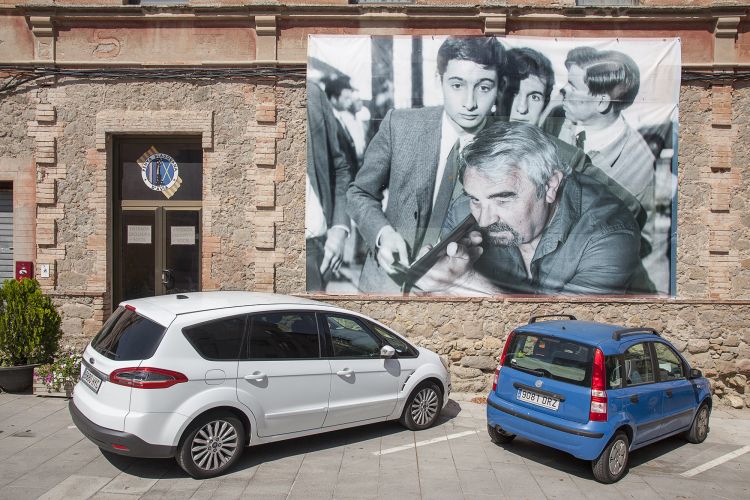

-
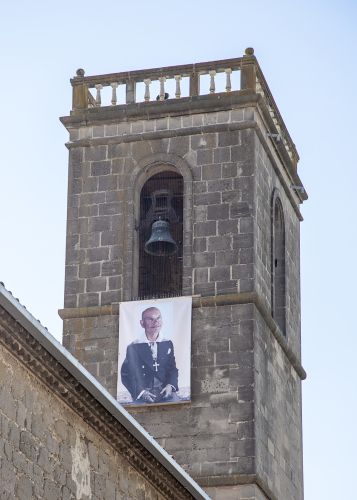

2020, Avià, Spain
Publications
Grans
Arte territorial
GRANS originates from an encounter I had with the neighbors of the town Avià, in Catalonia during the month of July 2020.
In a context of early disconfinement in one of the areas most affected by the pandemic in Spain, I was summoned by Konvent, Berga’s multidisciplinary art center to carry out work with the elderly in the town of Avià. Far from the images that we see about the consequences of Covid-19 in the elderly, the creation is focused on an ode to life, a tribute when the looks of recent months were oriented towards a less colorful path.
The result is a project that includes current photographs inserted into old ones, in a poetic inlay that transcends collage and moves away from the archive image.
With the post-production of the image, this transition between past and present is highlighted with colored lines that frame the person currently photographed, within the old image. The framework acquires a force that moves away from the drama that confinement has left in society.
Thus, we rebuilt cornered memories and for a few days, the elderly and their past were the protagonists of the summer on the streets of Avià.
A total of 13 photographs linking the past with the present are exhibited on large canvases –10×7 meters, the largest one– along the streets of Avià until the end of October. We wanted to play with the word ‘grans’ [‘older’ and ‘great’ in Spanish] because they are older people and it is in large format, with a great visual impact.
The “creation workshop” was curated by Rosa Cerarols from Konvent, with the support and complicity of the Avià City Council. The post-production of the images has been in charge of Pepe Molina Cruz.